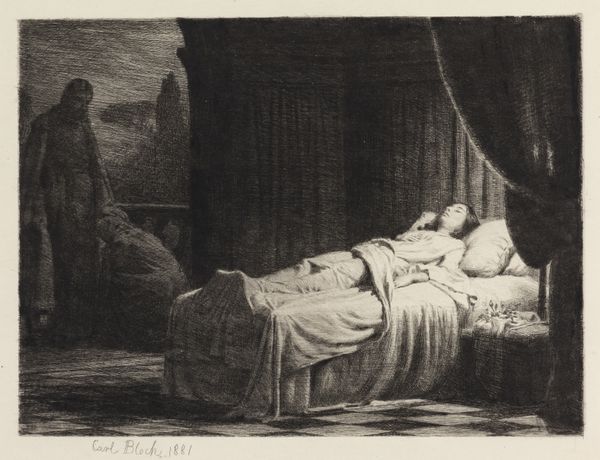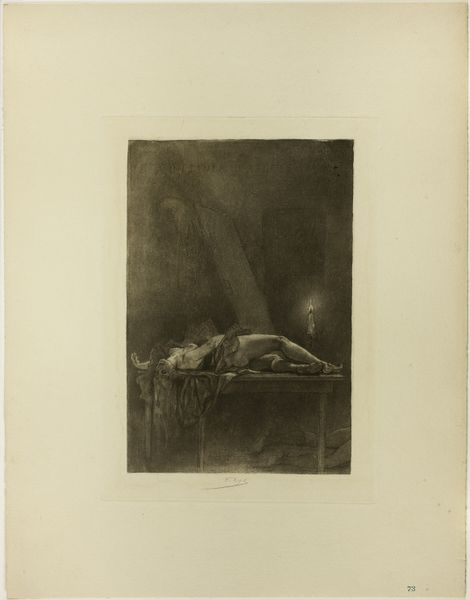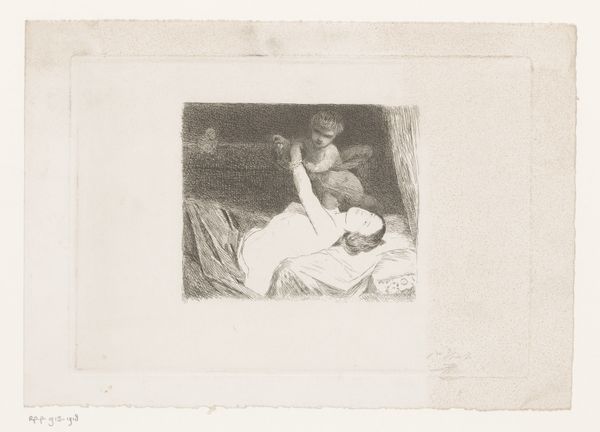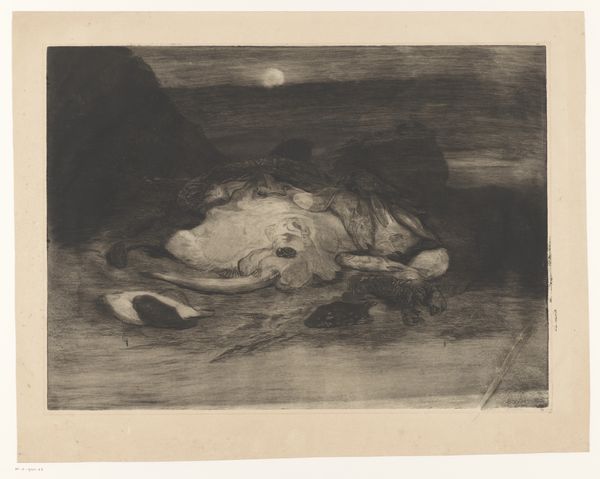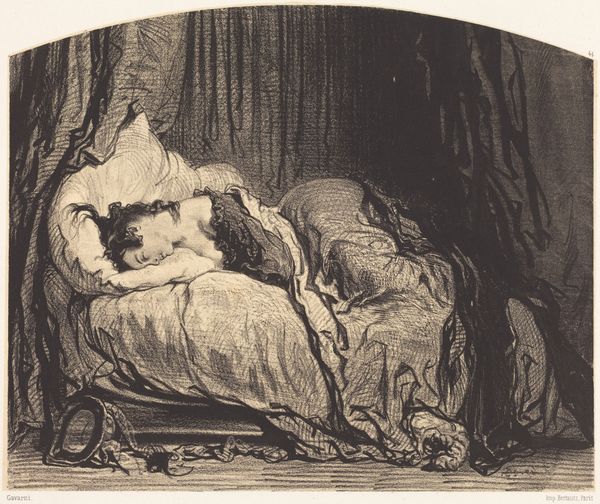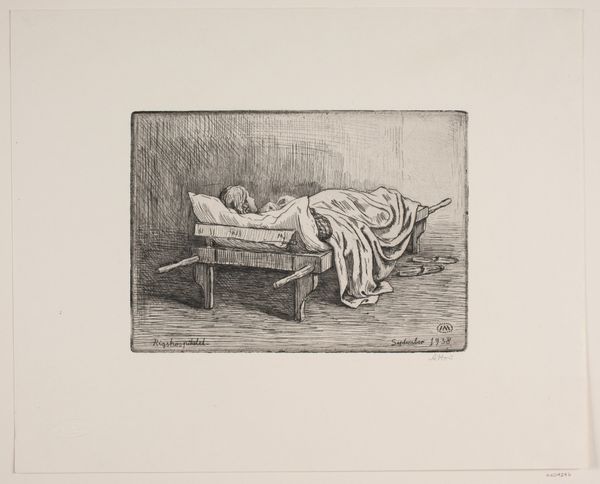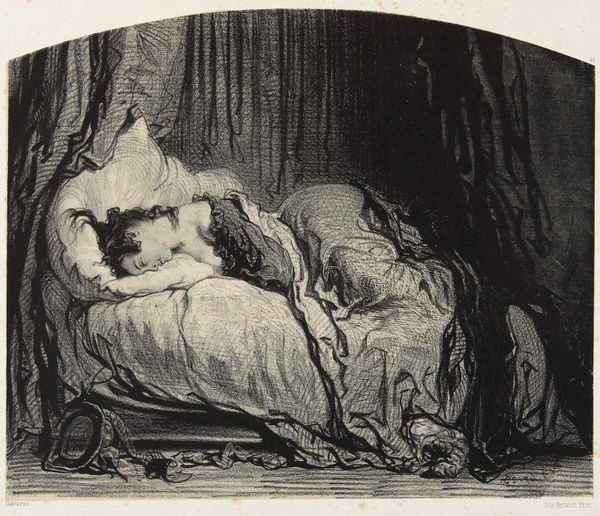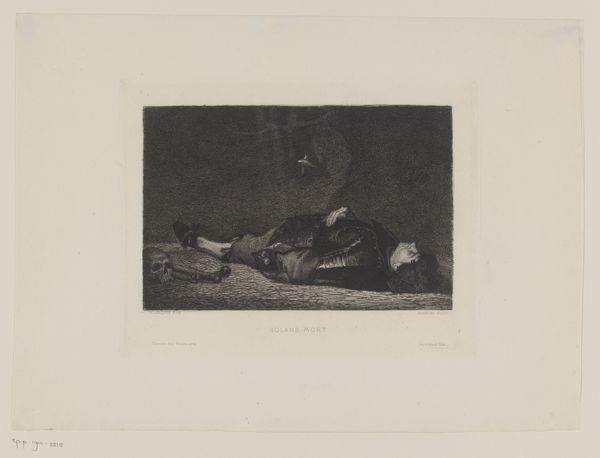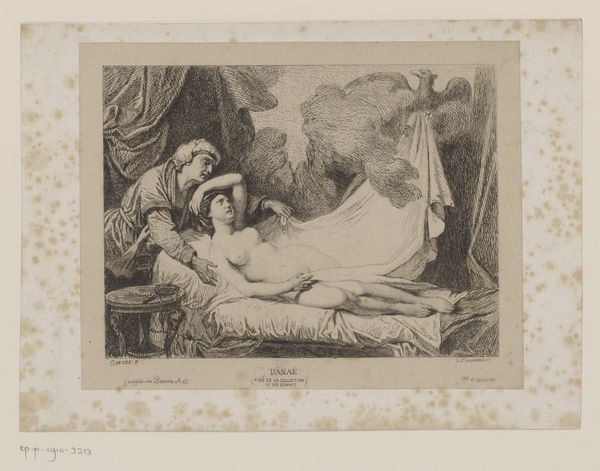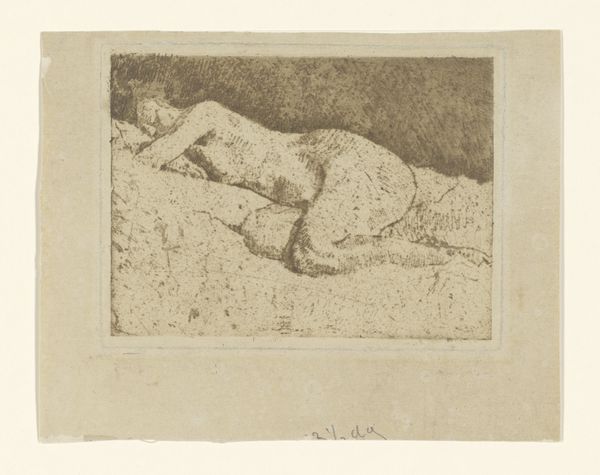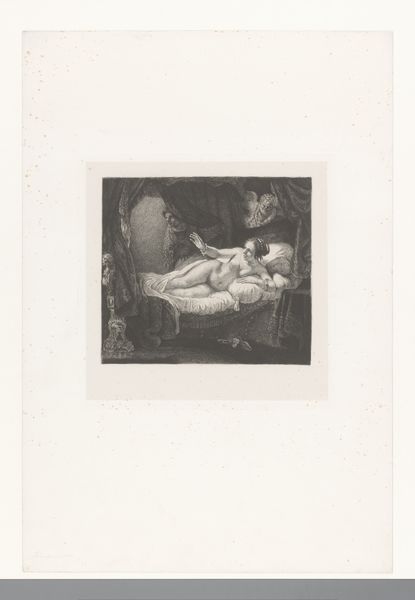
Dimensions: Plate: 12 3/8 × 17 15/16 in. (31.4 × 45.5 cm) Sheet: 15 15/16 in. × 22 in. (40.5 × 55.9 cm)
Copyright: Public Domain
Curator: What a somber and stark print! The values range from dark, velvety blacks to the crispest whites, creating a really unsettling visual drama. Editor: Indeed. We are currently observing "Death (from the series A Love)" by Max Klinger, made between 1887 and 1903. Klinger was a German artist associated with symbolism, and this etching is held at the Metropolitan Museum of Art. He lived through a period of great social upheaval and this seems to tap into it. Curator: I agree; the social anxieties of the period seem palpable here. But the way Klinger orchestrates light and shadow feels very intentional. Look at how the figure of death looms—almost like an accusation, while the swooning man next to the deceased, along with a third grief-stricken witness, add a sense of drama to the tableau. Editor: It's a very stagey composition. I am especially struck by the textural contrasts - the smooth skin of the deceased, set against the detailed folds of fabric, makes me almost physically aware of the differences in texture. But I'd also highlight that the historical context matters here; think about the rise of industrialization, and anxieties of modernity pervading Europe. Curator: I do agree. And given Klinger's interest in psychological states, there seems a definite engagement with the romanticization of death, popular at the time, while also conveying something deeper and more disquieting than simple mourning. The artist successfully blends an element of reality and fantasy. Editor: It is difficult to ignore its art historical and social significance and it also has this unsettling ethereal quality that draws you into a very still, quiet, yet sorrowful world. Curator: Ultimately, it’s the masterful combination of graphic skill and emotional insight that gives this image its lasting power. Editor: For me it’s Klinger’s ability to evoke this range of sentiments through visual contrast that renders it captivating.
Comments
No comments
Be the first to comment and join the conversation on the ultimate creative platform.

